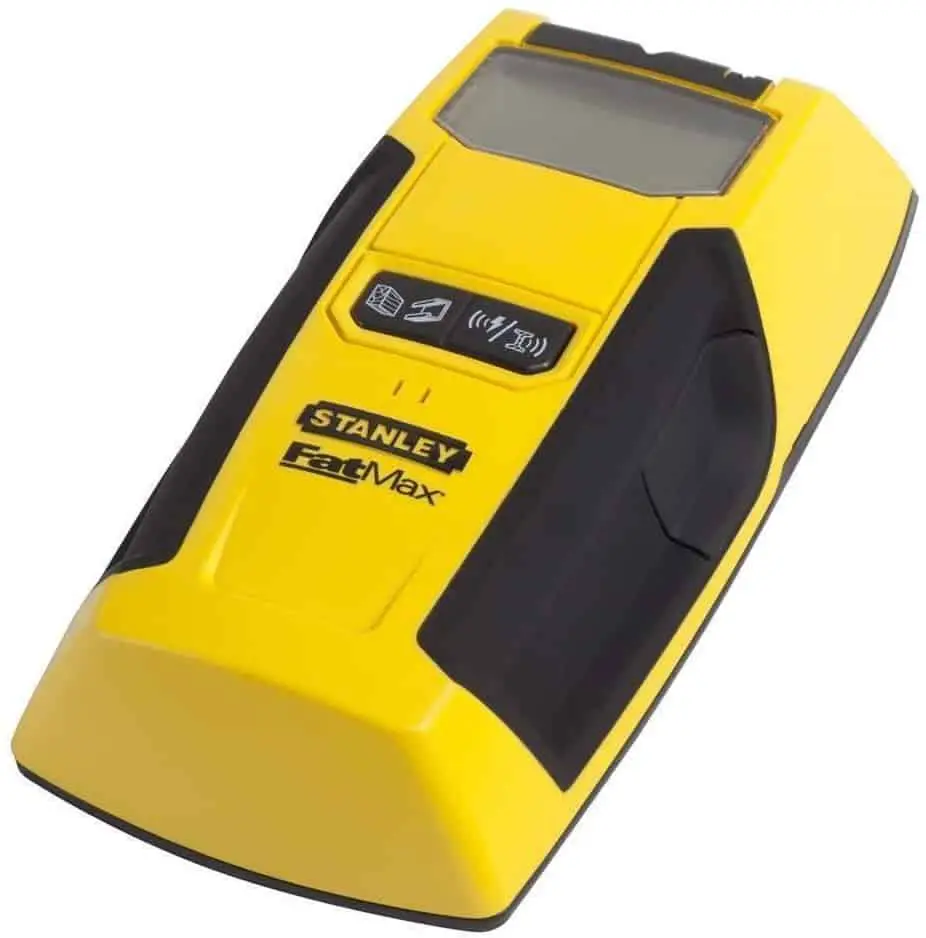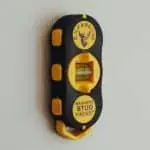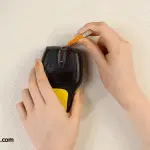If you are a homeowner who has ever tried mounting a shelf, TV or perhaps a heavy hanging picture, it may have fallen off and possibly ruined part of the wall. If this has happened to you, then you should consider buying a Stanley FatMax Stud Sensor 300!
Studs are vertical pieces of solid wood that form the frame of a house. Knowing where they are behind a wall is important so that shelves or picture frames can be screwed into them. In comparison to a lighter drywall, which will fail to hold heavy items. This is where the Stanley FatMax Stud Sensor comes into play.
[rehub_affbtn btn_text=”Check Amazon” btn_url=”https://www.amazon.com/gp/product/B00A905Y2U/ref=as_li_tl?ie=UTF8&camp=1789&creative=9325&creativeASIN=B00A905Y2U&linkCode=as2&tag=sfgusa-20&linkId=e86ab7ee217d4cdc12d30dd72f228a4d”]
It does what it says, which is finding studs behind the wall surface, making it an essential tool for any contractor and even homeowner. In addition to its primary feature, the Stanley Stud Sensor also comes in handy for detecting AC wires and other building materials so that you don’t accidentally screw into something you shouldn’t, damaging the integrity of your home.
Stanley has made a name for itself as a producer of affordable yet reliable hands on tools and appliances. It’s FatMax Stud Sensor 300 is a professional grade tool that will be as useful to a contractor undertaking a major project, as it is to a homeowner wanting to hang a couple of pictures.
It includes an easy to read backlit LCD screen for those dark corners where a regular display would just be unreadable. It also comes with an auto-calibrating feature for users who don’t have much experience with using stud sensors.
Stanley FatMax Stud Sensor 300 Features:
The following are some key features that set the Stanley FatMax300 apart from other stud sensors in the market.
Multi-Scanner
Stanley FatMax300 offers four different sensing modes:
- Stud mode
- Metal scanning mode
- AC tracking
- Depth detection
The FatMax300 can effectively detect wood frames, metal studs, AC wiring and other building materials hiding behind your wall up to a depth of 3 inches, depending on the scanning mode selected. The different sensing modes can be switched between as required to produce accurate results. The FatMax300 can detect wood and metal studs up to a depth of 1.5 inches through drywall, while the metal scan mode is capable of detecting wiring and building materials up to a thickness of 3 inches.
The device will illuminate and beep audibly when it detects wood or metal studs. The red ‘Live’ LED at the top of the device will begin flashing with audible beep noise when it senses electric wiring behind the wall.
[rehub_affbtn btn_text=”Check Amazon” btn_url=”https://www.amazon.com/gp/product/B00A905Y2U/ref=as_li_tl?ie=UTF8&camp=1789&creative=9325&creativeASIN=B00A905Y2U&linkCode=as2&tag=sfgusa-20&linkId=e86ab7ee217d4cdc12d30dd72f228a4d”]
Backlit Display
With a bright LCD display, the Stanley FatMax 300 makes it easier to find and detect objects accurately. The LCD screen walks users through the auto-calibration, displays the location of the stud, and notifies users when the battery depletes. When you see the low battery sign pop up, it’s time to replace the 9V battery.
When the device has finished auto-calibration, the ‘Ready’ icon will light up on the screen to inform users the device is now ready to initiate scanning. The location of the stud can be accurately identified in a similar fashion with the help of location graphics. For instance, when the sensor passes over the center of the stud, the ‘Center’ icon lights up with a beeping sound.
How to Calibrate and Use the Stanley FatMaxStud Sensor 300
A number of first-time users who don’t have experience with newer stud sensors find it difficult to understand how to use the Stanley FatMax 300 to produce accurate results. The process, however, is pretty straightforward once you know what to do. You will be detecting studs and wiring behind those walls in no time.
Simply place the FatMax flat against a wall and push and hold the detection buttons to begin calibration. An important thing to note when calibrating is that the device must be on a section of the wall with no stud behind it.
If the device is accidentally calibrated on a stud, it will fail to detect studs behind the wall. The best way to know if the device was calibrated properly is to move it around on the wall after calibration is complete and see if it manages to detect any studs.
If it doesn’t, let go of the detection buttons and begin calibration again, this time placing the device 3 to 4 inches to the left or right of its original position. This should allow the device to calibrate properly and it will then beep and display graphics accordingly when detecting studs.
The same process should be followed when detecting wiring and other building materials, as the device will fail to detect wiring if it is calibrated over an AC wire behind the wall.
Specifications
- The modern LCD is capable of displaying elaborate graphical notifications
- A backlit display makes it possible to use the device even in darker areas of the house
- Automatic calibration gets the device ready for detecting different materials within seconds
- Wood and metal stud detection up to 38mm
- AC wiring detection up to 51 mm
- Ergonomic design
Customers’ Reviews and Conclusion
Users have commended the accuracy, design, and ease of use of the Stanley FatMax Stud Sensor 300 while appreciating the value for money it provides in comparison to alternatives in a similar price range. Its multi-mode scanning capabilities and auto-calibration make it an immediate favorite for many users.
Some users, however, are not happy with the device’s scanning capabilities, complaining that the device fails to detect studs and wiring. Although this could be due to a faulty device, which should be returned to the distributor immediately, most of the time this happens because of improper calibration. Other users complain that the instruction manual is in a graphical form, making it difficult to understand while commending the device’s accuracy and usability as a whole.
Overall, the Stanley FatMax 300 Stud Sensor is a professional-grade multi-mode scanner, designed for professionals and homeowners. Following the guide above should allow first-time users to get it set up and scanning for studs in no time. Once you calibrate it properly, it will work perfectly.
[rehub_affbtn btn_text=”Check Amazon” btn_url=”https://www.amazon.com/gp/product/B00A905Y2U/ref=as_li_tl?ie=UTF8&camp=1789&creative=9325&creativeASIN=B00A905Y2U&linkCode=as2&tag=sfgusa-20&linkId=e86ab7ee217d4cdc12d30dd72f228a4d”]
Other product Reviews






